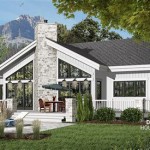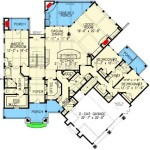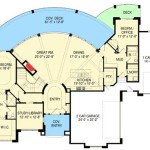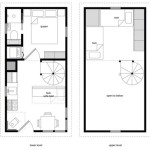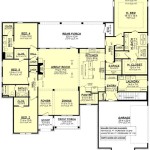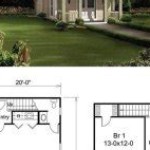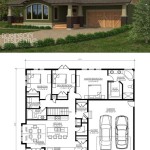Beach house building plans are comprehensive blueprints that provide detailed instructions for constructing or renovating a beach house. They encompass all aspects of the project, including the foundation design, floor plan layout, exterior structure, and interior finishes. These plans serve as a roadmap for contractors and homeowners to ensure the safe and efficient execution of the building process.
Whether you’re planning to build a cozy coastal retreat for weekend getaways or a luxurious waterfront residence, beach house building plans are an essential starting point. By providing clear guidelines and specifications, these blueprints help minimize potential risks, streamline the construction process, and ultimately bring your dream beach house to life.
In the following sections, we’ll delve deeper into the vital role of beach house building plans, exploring their key components, benefits, and considerations when choosing the right plans for your project.
Beach house building plans are essential for constructing safe and beautiful coastal homes. Here are 10 key points to consider:
- Foundation design
- Floor plan layout
- Exterior structure
- Interior finishes
- Building codes
- Zoning regulations
- Site conditions
- Energy efficiency
- Cost estimates
- Timeline
These plans provide a roadmap for contractors and homeowners to ensure a successful building project.
Foundation design
The foundation is the critical base of any structure, and it’s particularly important for beach houses, which must withstand potential hazards like erosion, flooding, and high winds. Beach house building plans will include detailed specifications for the foundation design, ensuring that it is tailored to the specific site conditions and building requirements.
The type of foundation chosen will depend on factors such as the soil conditions, the size and weight of the house, and the elevation of the site. Common foundation types for beach houses include:
- Slab-on-grade: A concrete slab poured directly onto a prepared base of compacted soil or gravel. This type of foundation is suitable for areas with stable soil conditions and low water tables.
- Crawl space: A foundation with a raised floor system that creates a crawl space beneath the house. This allows for access to plumbing, electrical, and other utilities, and can also provide additional storage space. Crawl spaces must be well-ventilated to prevent moisture and mold issues.
- Basement: A foundation with a below-grade level that provides additional living space or storage. Basements are not as common in beach houses due to the risk of flooding and moisture problems, but they can be an option in certain situations.
In addition to the type of foundation, the building plans will also specify the depth and width of the footings, the reinforcement requirements, and the materials to be used. These details are crucial for ensuring the structural integrity and longevity of the beach house.
Proper foundation design is essential for the safety and durability of any beach house. By carefully considering the site conditions and building requirements, and by following the detailed specifications in the building plans, homeowners can ensure that their beach house is built on a solid and secure foundation.
Floor plan layout
The floor plan layout is a crucial element of beach house building plans, as it determines the overall functionality, flow, and livability of the home. Beach houses have unique requirements and considerations compared to other types of houses, and the floor plan should be carefully designed to maximize the benefits of the coastal environment while addressing potential challenges.
- Open and spacious living areas: Beach houses are often designed with open and spacious living areas that encourage indoor-outdoor living and take advantage of the beautiful views. Large windows and sliding doors allow for plenty of natural light and create a seamless connection between the interior and exterior spaces.
- Well-defined outdoor living spaces: Outdoor living is a key part of the beach house experience, and the floor plan should include well-defined outdoor living spaces such as decks, patios, or screened porches. These spaces should be designed to provide protection from the elements while still allowing for enjoyment of the outdoors.
- Multi-level designs: To maximize views and take advantage of the coastal terrain, beach houses often incorporate multi-level designs. Raised decks, elevated living areas, and rooftop terraces are common features that allow for panoramic views of the ocean or surrounding landscape.
- Flexible and adaptable spaces: Beach houses are often used for a variety of purposes, from family vacations to entertaining guests. The floor plan should include flexible and adaptable spaces that can be easily reconfigured to accommodate different needs and activities.
By carefully considering these factors and incorporating them into the floor plan layout, homeowners can create a beach house that is both functional and beautiful, providing a comfortable and enjoyable living experience for years to come.
Exterior structure
The exterior structure of a beach house is designed to withstand the unique challenges of the coastal environment, including high winds, salt spray, and moisture. Beach house building plans will provide detailed specifications for the exterior structure, ensuring that it is durable, weather-resistant, and aesthetically pleasing.
- Wind resistance: Beach houses must be designed to withstand high winds, which can cause significant damage to structures. Building plans will specify the required wind load resistance for the house, and will include details on the framing, sheathing, and roofing materials that are necessary to meet these .
- Corrosion resistance: The salt spray and moisture in the coastal air can cause metal components to corrode quickly. Building plans will specify the use of corrosion-resistant materials for exterior elements such as nails, screws, flashing, and hardware. Stainless steel or galvanized steel are commonly used in beach house construction.
- Moisture resistance: Beach houses are exposed to high levels of moisture, both from the air and from rain and flooding. Building plans will include details on how to properly seal and the exterior of the house, including the use of moisture-resistant materials such as sheathing and siding.
- Aesthetic appeal: In addition to being functional, the exterior structure of a beach house should also be aesthetically pleasing. Building plans will include details on the exterior finishes, such as siding, trim, paint colors, and architectural features, to ensure that the house complements its surroundings and reflects the desired style.
By carefully considering these factors and incorporating them into the exterior structure design, homeowners can create a beach house that is both durable and beautiful, providing a comfortable and enjoyable living experience for years to come.
Interior finishes
The interior finishes of a beach house play a crucial role in creating a comfortable, stylish, and inviting living space. Beach house building plans will provide detailed specifications for the interior finishes, including flooring, walls, ceilings, cabinetry, and fixtures. These finishes should be carefully chosen to complement the coastal environment and to withstand the unique challenges of a beach house.
- Flooring: Beach house flooring should be durable, easy to clean, and moisture-resistant. Popular choices include hardwood, tile, and luxury vinyl plank (LVP). Hardwood floors add a touch of warmth and sophistication, while tile is a practical and durable option that is easy to clean and maintain. LVP is a newer option that offers the look of hardwood or tile at a more affordable price.
- Walls: Beach house walls should be finished with materials that are moisture-resistant and easy to clean. Drywall is a common choice, as it is relatively inexpensive and can be painted or wallpapered to match any dcor. Beadboard is another popular option, as it adds a touch of coastal charm and is also moisture-resistant. Shiplap is a similar option to beadboard, but with wider planks.
- Ceilings: Beach house ceilings can be finished with a variety of materials, including drywall, wood paneling, or tongue and groove planks. Drywall is a versatile and affordable option that can be painted or textured to create different looks. Wood paneling adds warmth and character to a beach house, and tongue and groove planks create a more rustic and coastal feel.
- Cabinetry: Beach house cabinetry should be made from durable materials that can withstand moisture and humidity. Wood is a popular choice, as it is both beautiful and functional. However, it is important to choose wood species that are naturally resistant to moisture, such as teak or cypress. Other options for beach house cabinetry include stainless steel and thermofoil.
By carefully considering these factors and incorporating them into the interior finish selections, homeowners can create a beach house that is both beautiful and functional, providing a comfortable and enjoyable living experience for years to come.
Building codes
Building codes are essential regulations that govern the construction of buildings to ensure their safety, structural integrity, and energy efficiency. Beach house building plans must comply with all applicable building codes, which vary depending on the location of the property and the specific requirements of the local jurisdiction.
Building codes typically address a wide range of aspects of construction, including:
- Structural requirements: These codes specify the minimum requirements for the structural design of buildings, including the foundation, framing, and roof. They are designed to ensure that buildings can safely withstand the loads imposed on them, such as wind, snow, and earthquakes.
- Fire safety: Building codes include provisions to minimize the risk of fire and to protect occupants in the event of a fire. These provisions may include requirements for fire-resistant materials, smoke detectors, and sprinkler systems.
- Energy efficiency: Building codes are increasingly incorporating energy efficiency requirements to reduce the environmental impact of buildings and to lower energy costs for homeowners. These requirements may include insulation standards, energy-efficient appliances, and renewable energy sources.
- Accessibility: Building codes also include requirements to ensure that buildings are accessible to people with disabilities. These requirements may include ramps, elevators, and accessible bathrooms.
By complying with building codes, beach house builders can ensure that their projects are safe, durable, and energy-efficient. Building code compliance also helps to protect homeowners from potential legal liabilities and insurance issues. It is important to note that building codes are subject to change over time, so it is essential to consult with local building officials to ensure that your beach house building plans meet the latest requirements.
Zoning regulations
Zoning regulations are land use regulations that divide a city, town, or county into different zones, each with its own set of permitted uses. Zoning regulations are designed to promote orderly development, protect property values, and ensure the compatibility of land uses within a community.
- Residential zoning: Residential zoning districts are designated for residential uses, such as single-family homes, multi-family homes, and townhouses. Beach houses are typically located in residential zoning districts.
- Commercial zoning: Commercial zoning districts are designated for commercial uses, such as retail stores, offices, and restaurants. Beach houses are not typically permitted in commercial zoning districts.
- Industrial zoning: Industrial zoning districts are designated for industrial uses, such as factories, warehouses, and manufacturing facilities. Beach houses are not typically permitted in industrial zoning districts.
- Mixed-use zoning: Mixed-use zoning districts allow for a combination of residential, commercial, and industrial uses. Beach houses may be permitted in mixed-use zoning districts, depending on the specific regulations of the district.
It is important to check the zoning regulations for the specific area where you plan to build your beach house to ensure that it is permitted. If your property is not zoned for residential use, you may need to apply for a variance or rezoning.
Site conditions
Site conditions play a crucial role in beach house building plans. Before beginning the design process, it is essential to carefully assess the site and consider factors such as soil conditions, slope, drainage, vegetation, and access to utilities.
- Soil conditions: The soil conditions on the site will impact the type of foundation that is required for the beach house. Sandy soils, for example, may require a deeper foundation than clay soils. Geotechnical engineers can be consulted to evaluate the soil conditions and make recommendations for the most appropriate foundation design.
- Slope: The slope of the site will also affect the design of the beach house. A sloping site may require a stepped foundation or retaining walls to create a level building pad. The slope can also impact the placement of the house on the site and the views from the house.
- Drainage: Proper drainage is essential to prevent water from accumulating around the beach house and causing damage to the foundation or structure. The building plans should include details on how stormwater will be managed on the site, such as gutters, downspouts, and drainage swales.
- Vegetation: The type and amount of vegetation on the site can also impact the design of the beach house. Trees and other vegetation can provide shade and privacy, but they can also block views and interfere with construction. The building plans should take into account the existing vegetation and identify any trees or other plants that need to be removed or relocated.
By carefully considering the site conditions and incorporating them into the building plans, homeowners can ensure that their beach house is designed to complement its surroundings and to withstand the unique challenges of the coastal environment.
Energy efficiency
Energy efficiency is an important consideration for beach house building plans, as beach houses are often located in areas with high energy costs. By incorporating energy-efficient features into the design, homeowners can reduce their energy consumption and save money on their utility bills.
- Insulation: Proper insulation is essential for reducing heat loss in the winter and heat gain in the summer. Beach house building plans should specify the type and thickness of insulation to be used in the walls, ceilings, and floors. Common insulation materials for beach houses include fiberglass, cellulose, and spray foam.
- Windows and doors: Windows and doors are another important source of heat loss and gain. Beach house building plans should specify energy-efficient windows and doors that have low U-factors and high R-values. Low U-factors indicate that the window or door is resistant to heat flow, while high R-values indicate that the window or door is a good insulator.
- HVAC system: The HVAC system is responsible for heating and cooling the beach house. Beach house building plans should specify an energy-efficient HVAC system that is right-sized for the house and that has a high SEER rating. SEER stands for Seasonal Energy Efficiency Ratio, and it measures the energy efficiency of an air conditioner or heat pump.
- Appliances: The appliances in a beach house can also contribute to energy consumption. Beach house building plans should specify energy-efficient appliances that have the ENERGY STAR label. ENERGY STAR appliances meet strict energy efficiency standards set by the U.S. Environmental Protection Agency (EPA).
By incorporating these energy-efficient features into the building plans, homeowners can create a beach house that is comfortable and affordable to operate. Energy-efficient beach houses also have a smaller environmental impact, which is important for preserving the coastal environment.
Cost estimates
Cost estimates are an essential part of beach house building plans. They help homeowners to budget for the project and to make informed decisions about the design and construction of their beach house. Cost estimates should include all of the costs associated with the project, from the land purchase to the final finishes.
The cost of building a beach house can vary significantly depending on a number of factors, including the size and complexity of the house, the location of the property, and the materials and finishes used. However, there are some general cost ranges that homeowners can use to get a rough idea of what to expect.
For a small, simple beach house, homeowners can expect to pay between $200,000 and $300,000. For a medium-sized beach house, the cost will typically range from $300,000 to $450,000. And for a large, luxury beach house, the cost can easily exceed $1 million.
It is important to note that these cost estimates are just averages. The actual cost of building a beach house will vary depending on the specific circumstances of the project. Homeowners should work with a qualified contractor to get a more accurate cost estimate for their specific project.
In addition to the construction costs, homeowners also need to factor in the cost of land, permits, and other fees. The cost of land will vary depending on the location and size of the property. Permits and other fees can also add up, so it is important to budget for these costs as well.
Timeline
Once you have your beach house building plans finalized, you can begin to develop a timeline for the construction process. The timeline will vary depending on the size and complexity of the project, but there are some general milestones that you can expect.
- Pre-construction:
The pre-construction phase includes all of the planning and preparation that needs to be done before construction can begin. This includes obtaining permits, finalizing the design, and hiring a contractor.
- Site work:
The site work phase includes preparing the land for construction. This may involve clearing the land, excavating the foundation, and installing utilities.
- Foundation:
The foundation is the base of the house, and it is important to get it right. The foundation will be designed to withstand the specific soil conditions and environmental factors at the building site.
- Framing:
The framing is the skeleton of the house. It includes the walls, roof, and floors. The framing is typically made of wood, but other materials can also be used.
Once the framing is complete, the house will begin to take shape. The next steps will include installing the siding, windows, and doors; finishing the interior; and completing the landscaping. The timeline for these phases will vary depending on the size and complexity of the project, but you can expect the entire construction process to take several months to a year or more.










Related Posts

